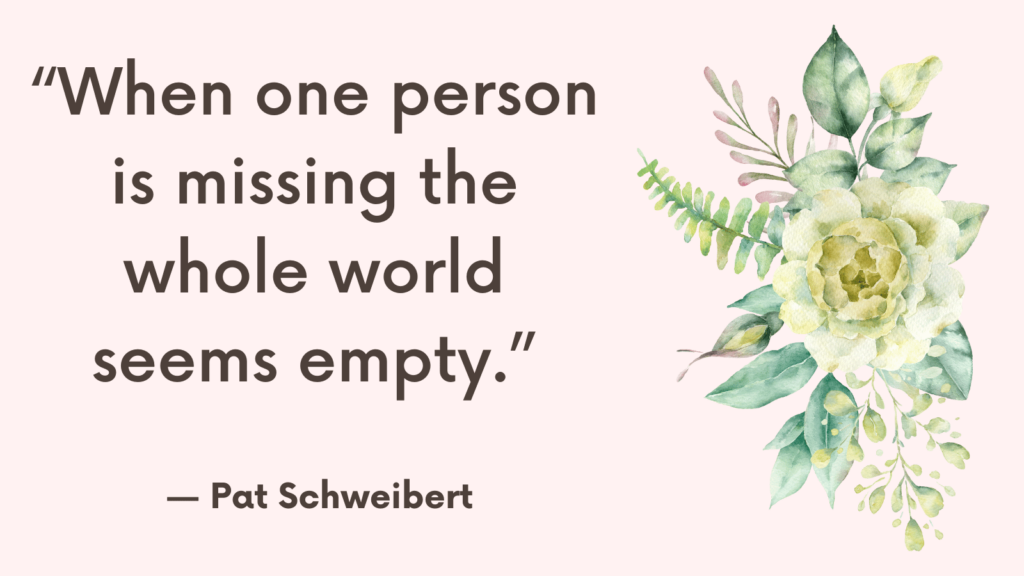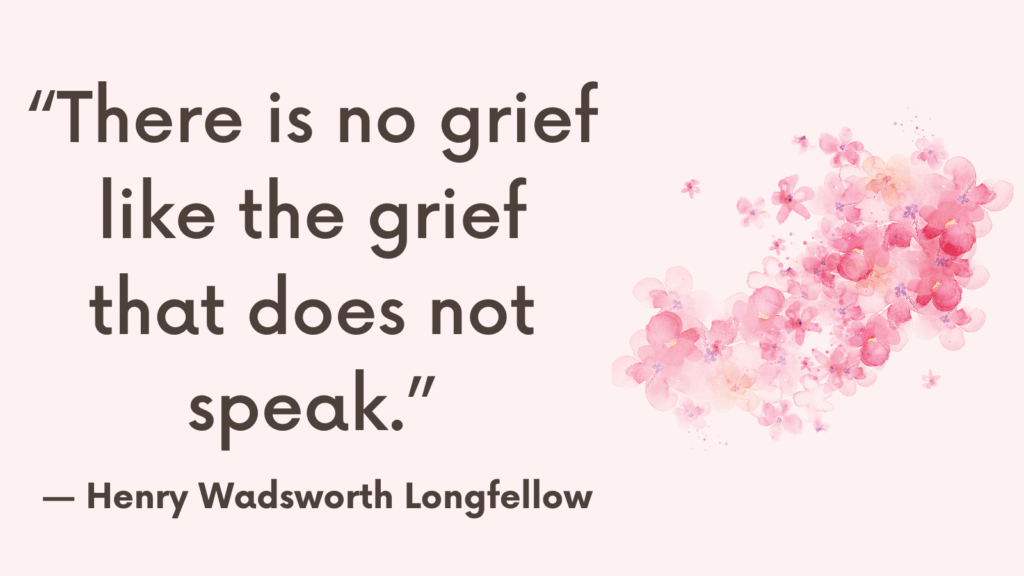This post contains explanation of grief ball in a box.
Explanation of Grief Ball In a Box
The ‘ball in the box’ analogy captures the evolving nature of grief and the unpredictable emotional triggers that individuals may encounter.
In the early stages of grieving, the ball within the box is very big, making it nearly impossible to move the box without repeatedly hitting the pain button.
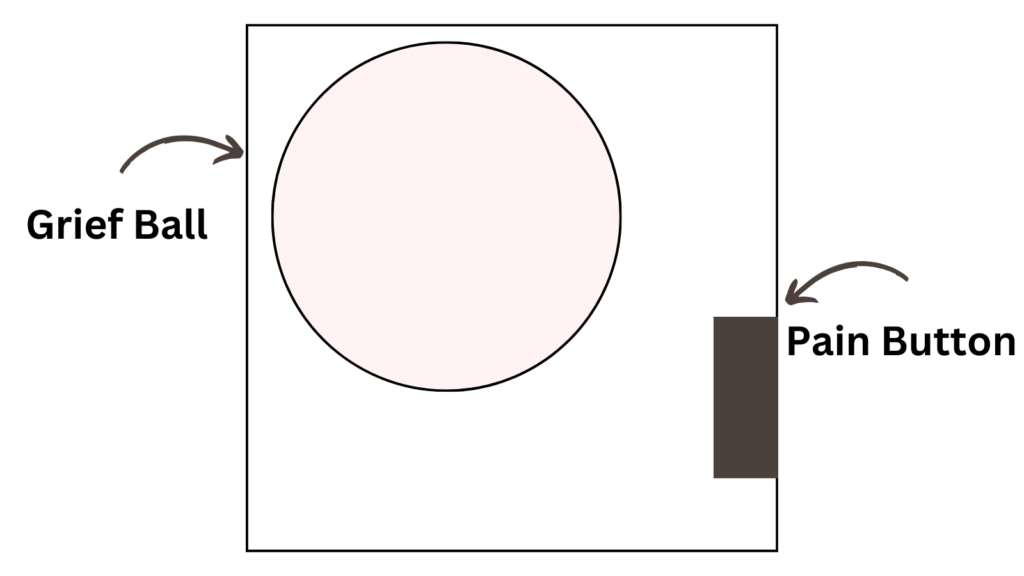
The metaphor effectively communicates the profound sense of helplessness that can accompany acute grief, as the ball rattles around uncontrollably, perpetually hitting the pain button.
The feeling of being unable to escape the anguish is powerfully conveyed through the image of the large, intrusive ball dominating the space within the box.
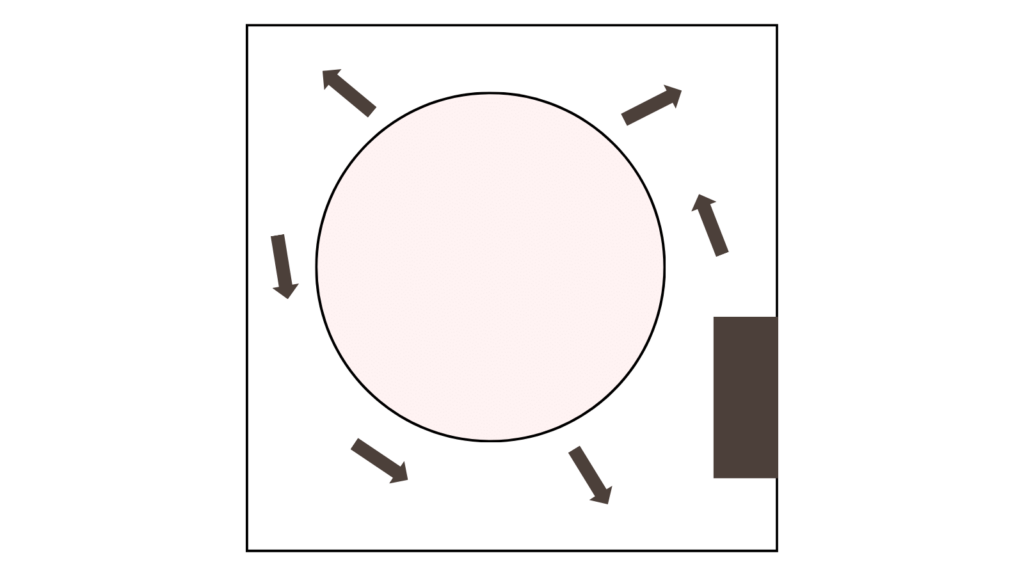
However, as the grief journey progresses, the ball gradually diminishes in size, signifying a reduction in the all-encompassing pain that once dominated daily life.
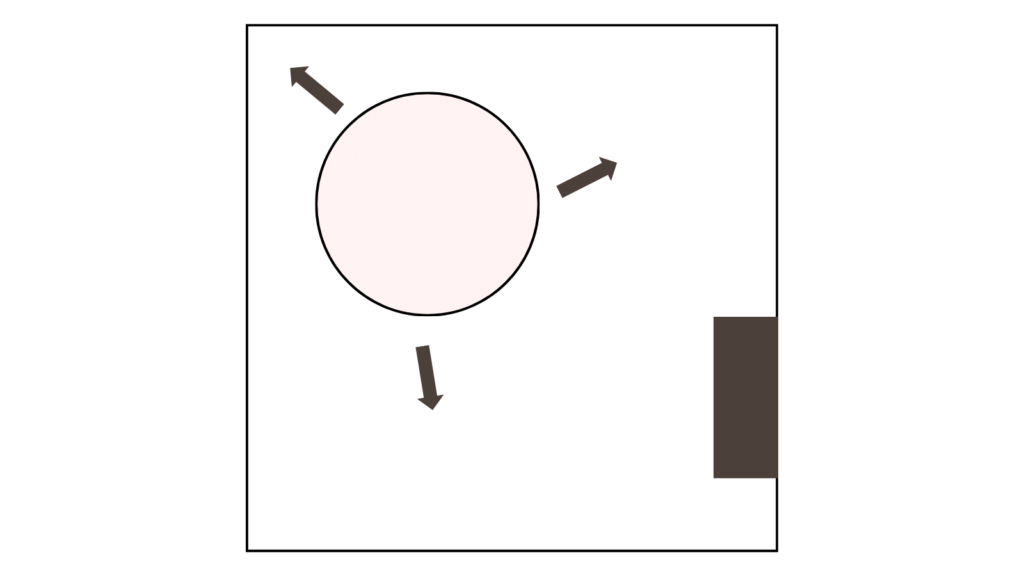
This transformation mirrors the natural process of adaptation and healing that occurs as individuals navigate their grief and adjust to life without their loved one.
Related: Best +30 Grief Activities For Adults (+FREE Worksheets PDF)
How to Cope with Grief Pain?
Coping with grief pain is a deeply personal and challenging journey that can impact every aspect of one’s life.
While the intensity and duration of grief are unique to each individual, the experience of profound loss can be overwhelming and all-consuming.
It’s important to recognize that grieving is a natural response to losing someone or something cherished, and it’s essential to be gentle with yourself as you navigate the complex emotions and changes that accompany this process.
1. Acknowledge and Validate Your Feelings
Allow yourself to fully experience the range of emotions that arise, including sadness, anger, guilt, confusion, and longing.
Recognize that these feelings are a normal response to loss, and it’s okay to grieve in your own way, without judgment or pressure to conform to specific timelines or expectations.
2. Seek Support
Don’t hesitate to reach out to friends, family members, or a support group who can provide empathy, understanding, and companionship during this difficult time.
Sharing your thoughts and feelings with others can offer comfort and validation, helping you feel less alone in your sorrow.
Related: Best 21 Grief Journaling Prompts (+FREE Grief Worksheets PDF)
3. Engage in Self-Care
Prioritize self-care activities that nurture your physical, emotional, and mental well-being.
This might include maintaining a healthy routine, getting regular exercise, eating nourishing foods, engaging in hobbies or activities you enjoy, and prioritizing adequate rest and relaxation.
4. Express Your Emotions
Find healthy outlets for expressing your emotions, such as writing in a journal, creating art, listening to music, or participating in activities that allow you to channel your feelings constructively.
Finding a creative or physical outlet for your emotions can provide a sense of release and catharsis.
Related: Grief Comes In Waves: Top 12 Lessons From Grief No One Talks About
5. Honor Your Loved One
Explore ways to commemorate and honor the memory of your loved one.
This might involve creating a tribute, participating in rituals or ceremonies, dedicating a space in your home to their memory, or engaging in charitable or community activities that hold significance.
6. Manage Triggers
Be mindful of situations, places, or anniversaries that may act as triggers for heightened grief.
It’s okay to modify your routines or seek alternate arrangements if certain environments or events are causing distress.
7. Embrace Moments of Joy
While grieving, it’s important to allow yourself to experience moments of joy and laughter, even amidst the pain.
Finding and cherishing moments of happiness does not diminish the love or significance of the person you’ve lost; instead, it honors their legacy by affirming life’s capacity for resilience and beauty.
Related: How To Help A Grieving Parent? (+FREE Worksheets For Grief)
8. Practice Mindfulness and Acceptance
Cultivate mindfulness practices that help ground you in the present moment and foster acceptance of the emotions and changes you’re experiencing.
Mindfulness techniques, meditation, or deep breathing exercises can provide solace and a sense of inner calm amid the tumult of grief.
9. Be Patient with Yourself
Healing from grief is an ongoing process, and there’s no set timeline for when the pain will diminish.
Be patient and compassionate with yourself as you navigate the ebb and flow of emotions, and allow yourself the space and time needed for healing and growth.

Conclusion
Remember, coping with grief pain is an individual journey, and it’s important to approach it with self-compassion, patience, and openness to seeking support when needed.
Your experiences and feelings are valid, and it’s okay to prioritize your well-being as you walk this path of healing and transformation.

